home | anatomy | physiology | pathology | clinical guides
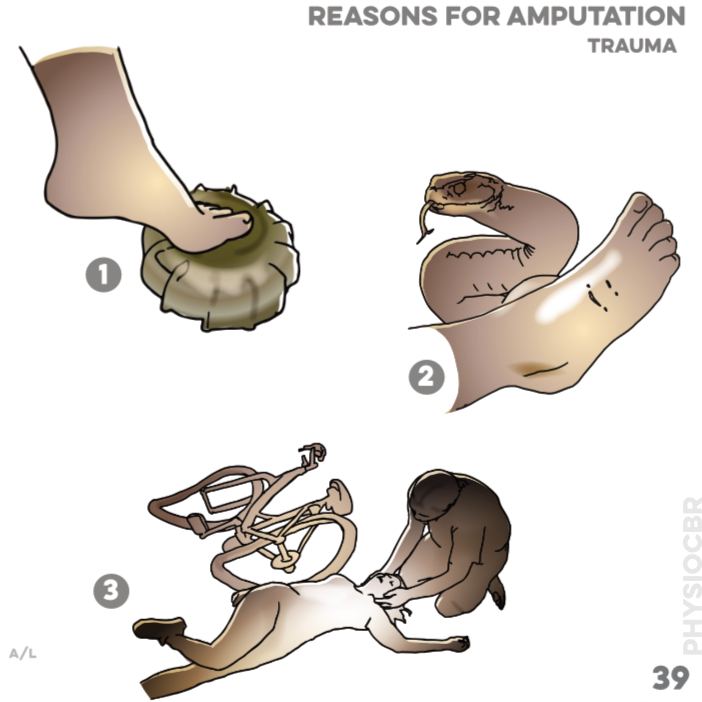
Causes of amputation, trauma: 1, land mine; 2, snake bite; 3, accident
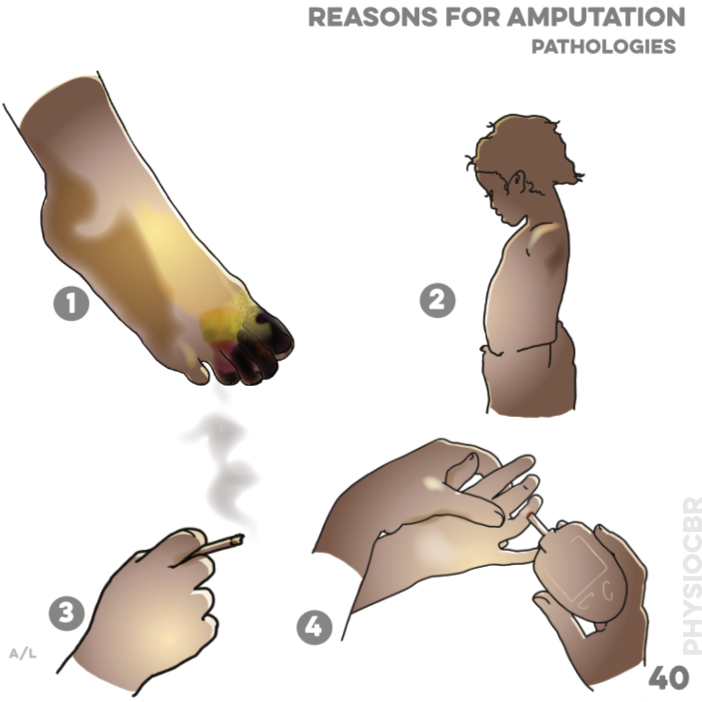
Causes of amputation: 1 vascular; 2 birth accident (congenital); 3 smoking-related illnesses; 4 diabetes
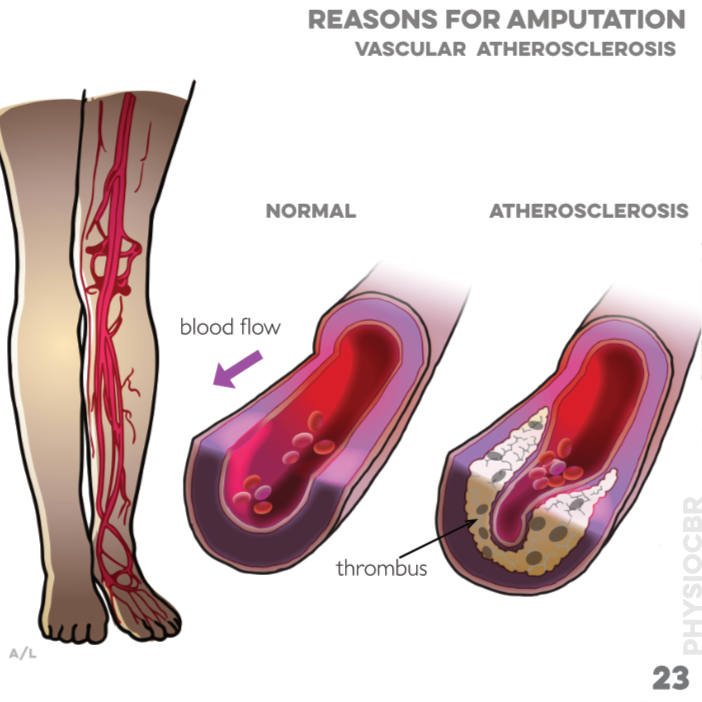
Blood vessels becoming blocked by fatty plaques can lead to amputation
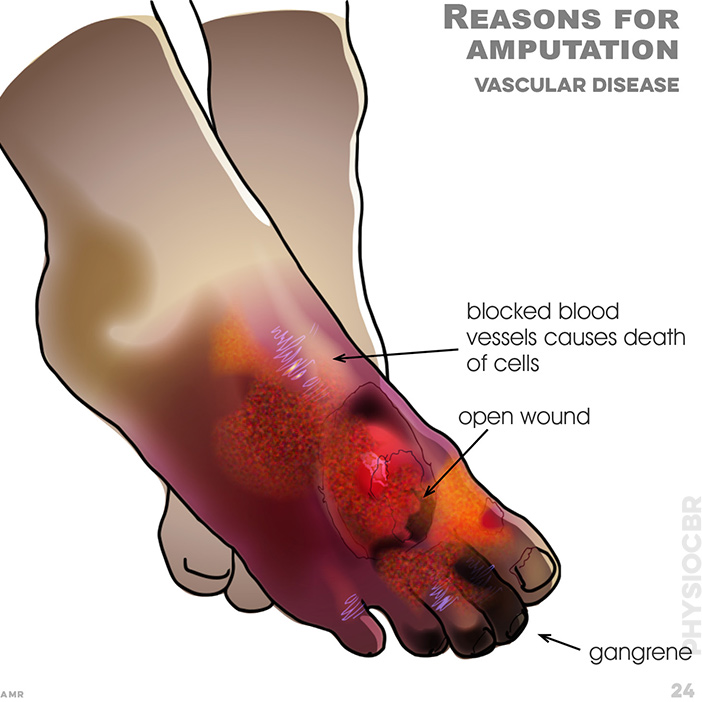
Vascular disease: can lead to gangrene and amputation
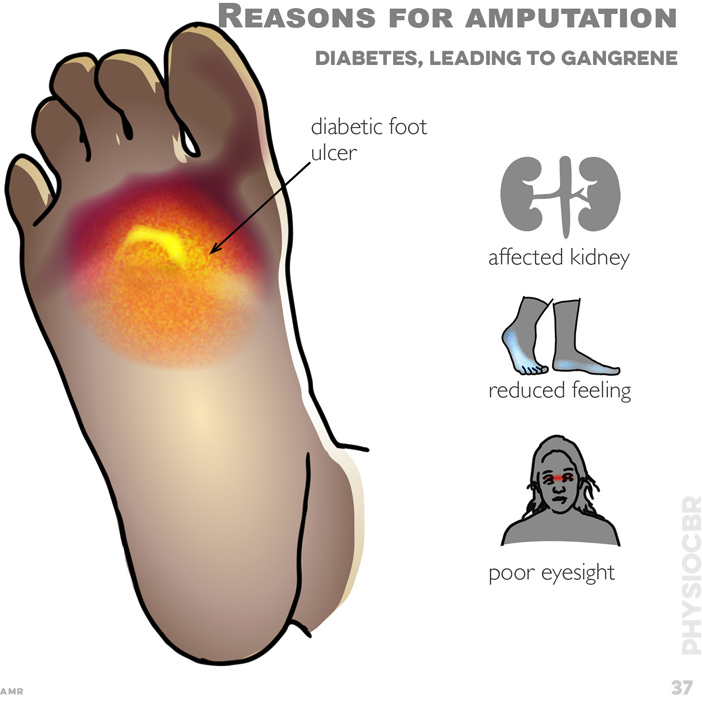
Consequences of diabetes may be poor eyesight, poor kidney function, loss of feeling in hands and feet, ulceration possibly leading to gangrene and amputation
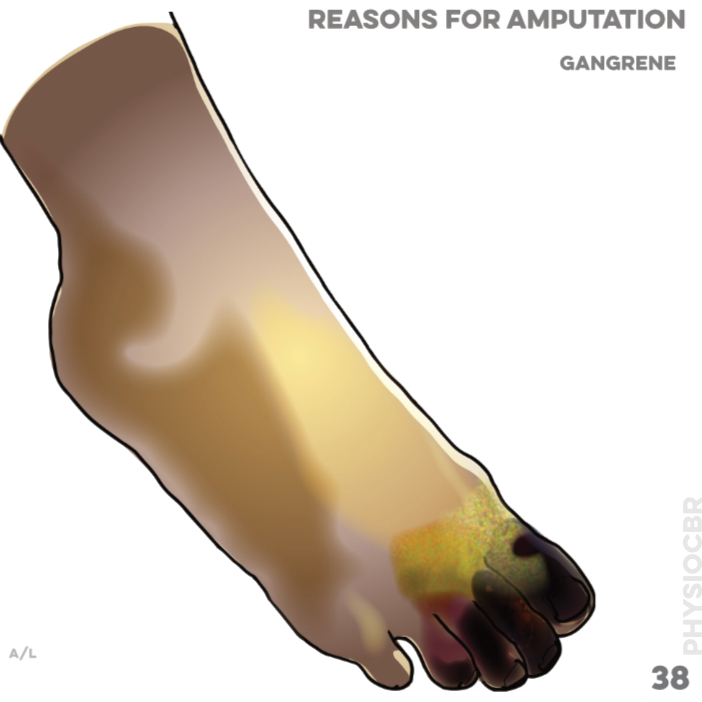
Dead tissue
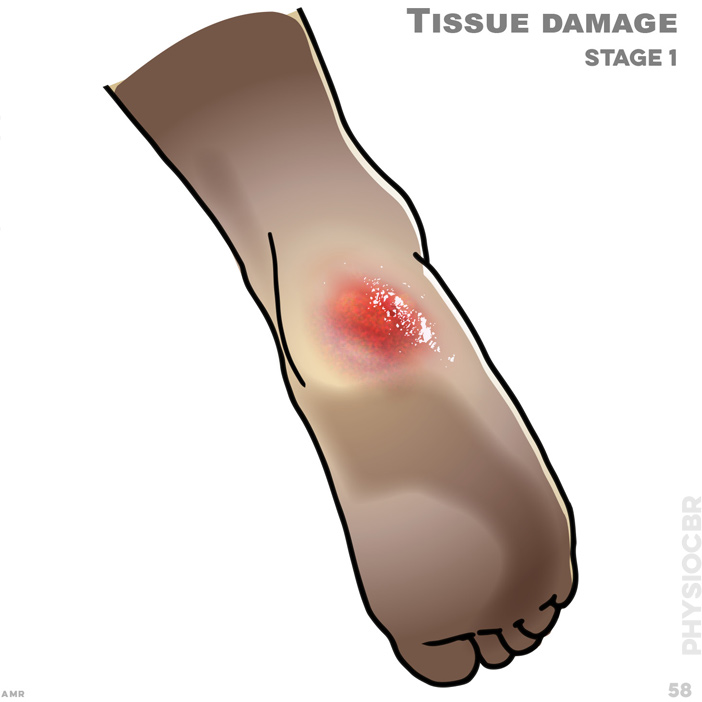
Stage 1: Tissue damage, redness of skin and whitening when pressure applied
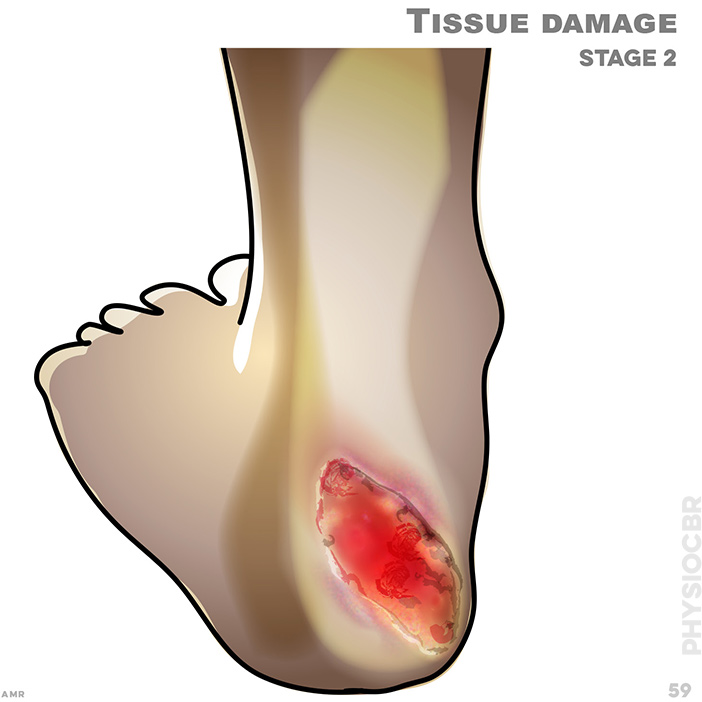
Stage 2: Tissue damage, broken skin and exposure of subcutaneous tissue
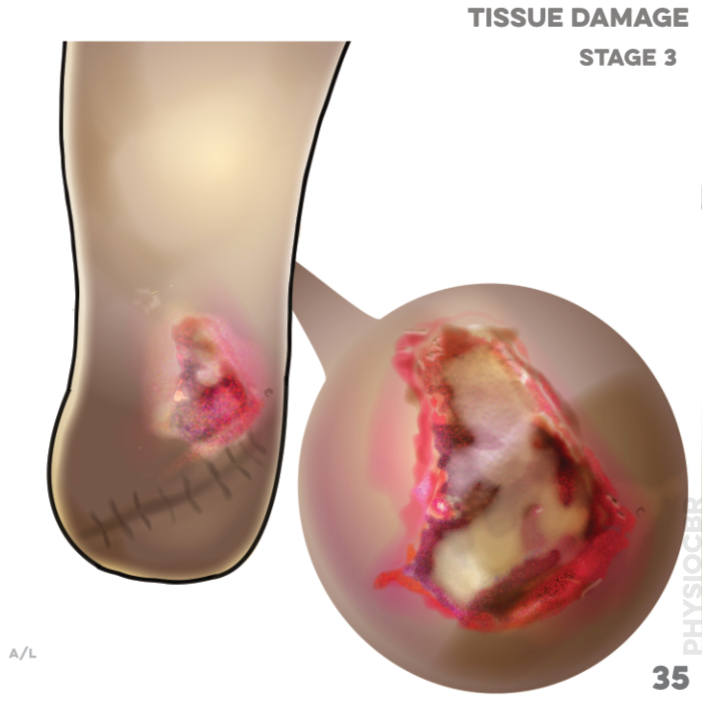
Stage 3: weeping wound, involvement of sub cutaneous tissue; formation of slough
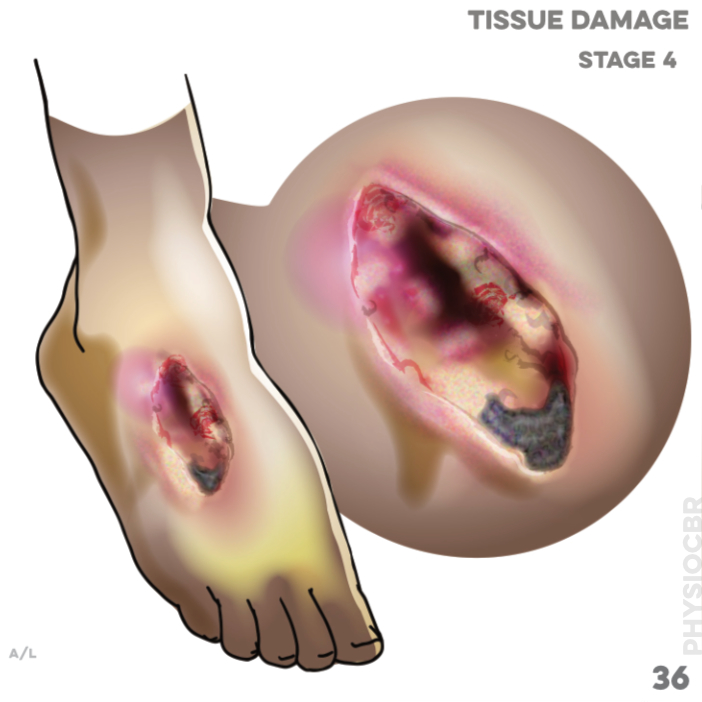
Stage 4: involvement of muscle tissue and necrosis
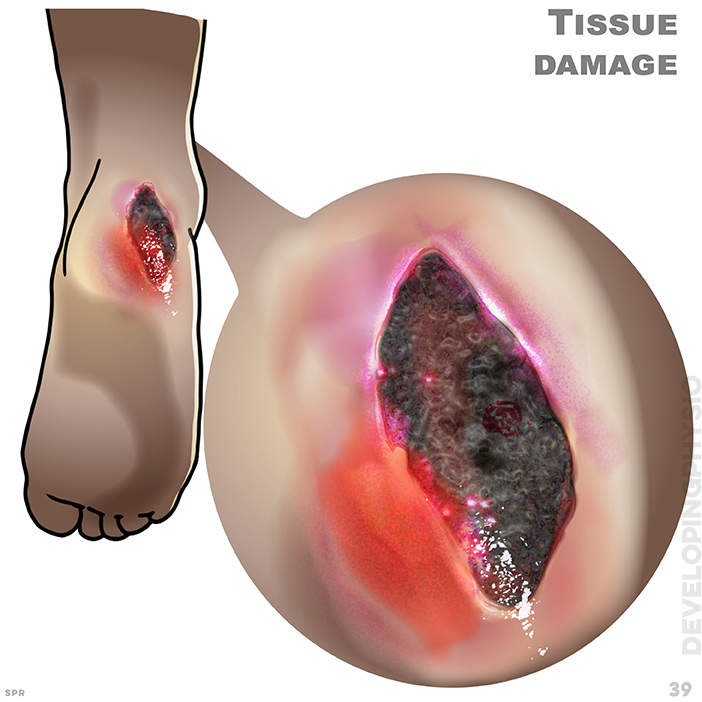
Stage 5 tissue necrosis and gangrene
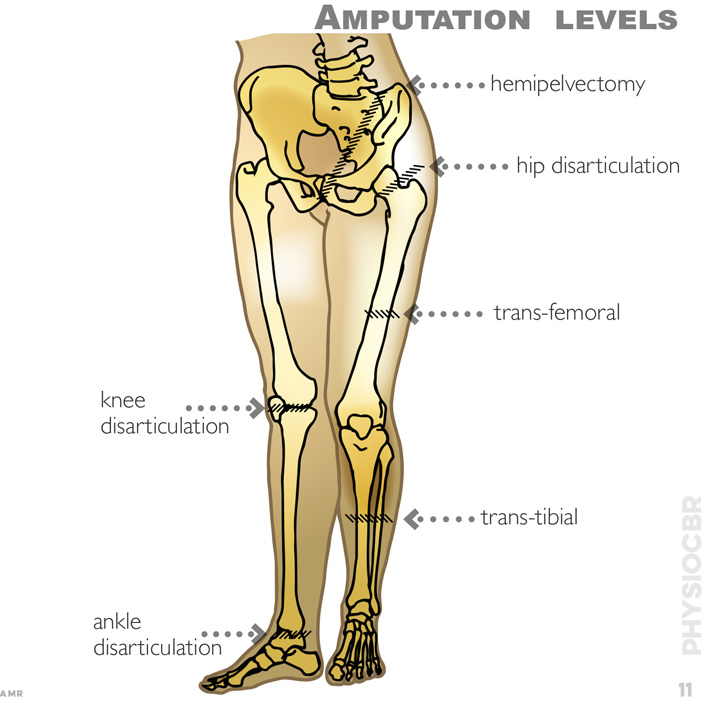
Amputation levels: trans-femoral, above knee (AK); trans-tibial, below knee (BK)
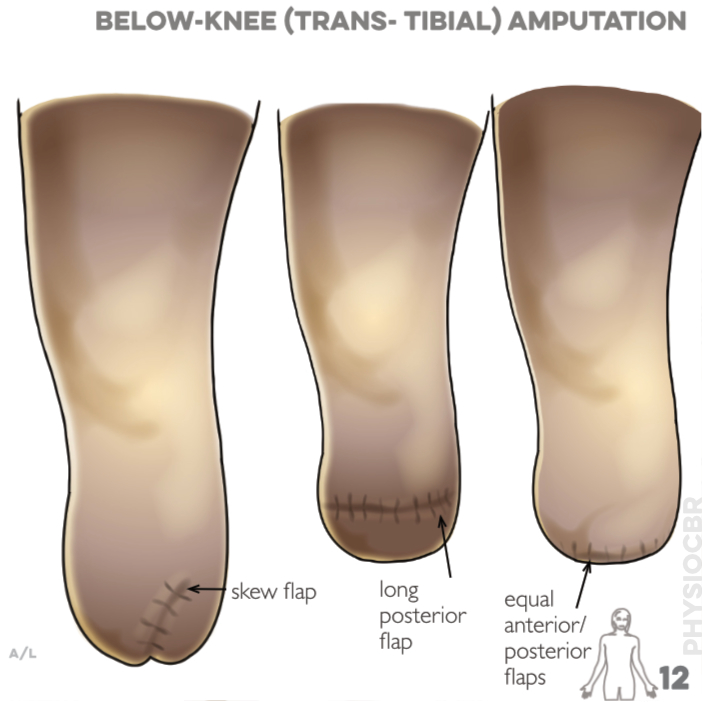
Types of amputation: long posterior flap & skew flap
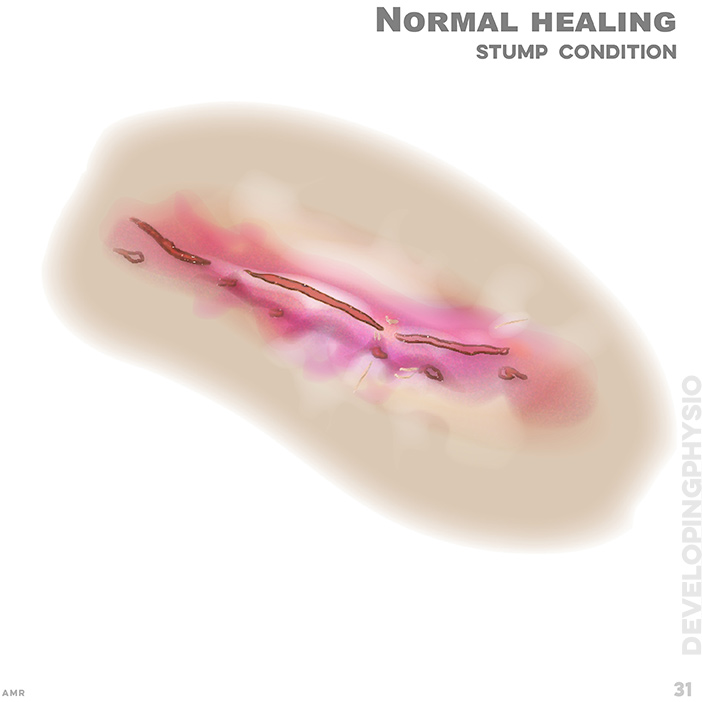
Stump condition with healing scar tissue after stitches removed

Signs of healing. 1: stable, swollen scar tissue; 2: dry, swollen, stabilising
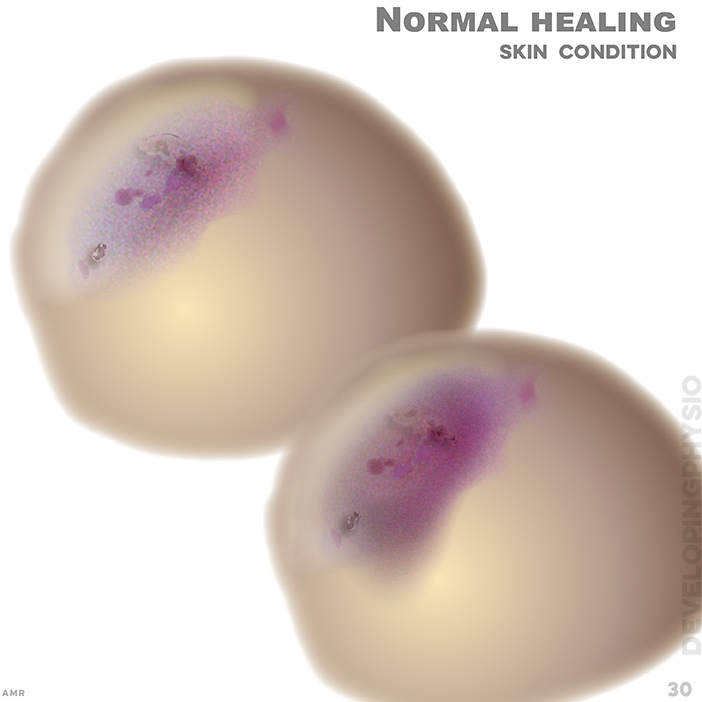
Skin condition: stable and healing
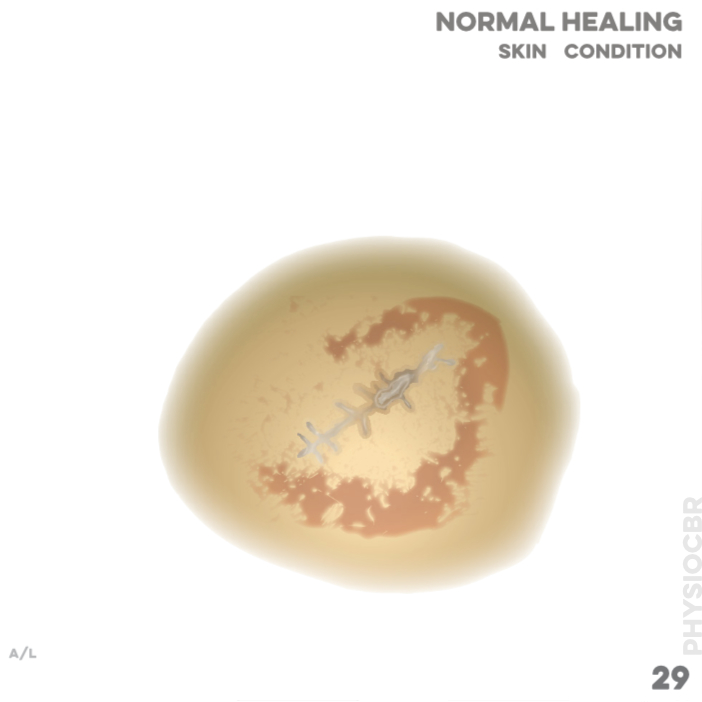
Skin condition: stable, clean scar tissue
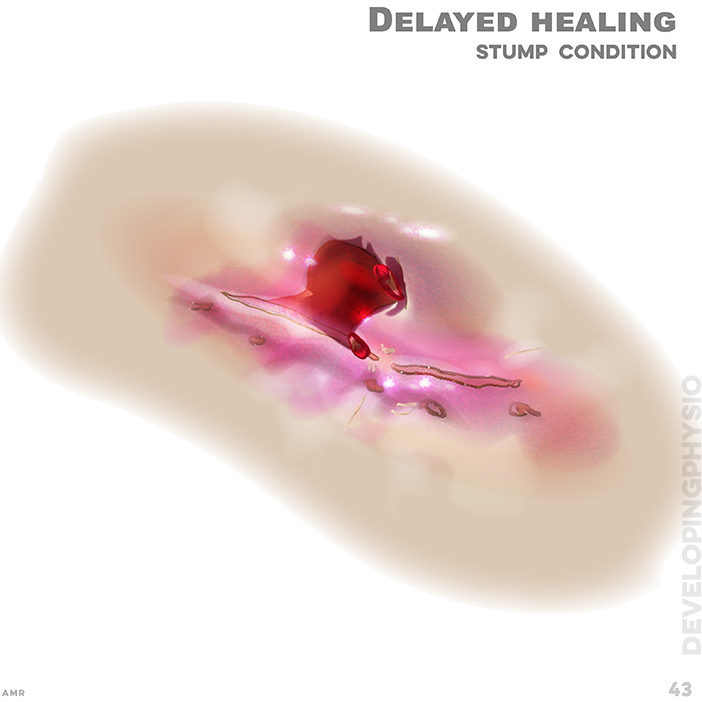
Stump condition, with wound breakdown after stitches removed
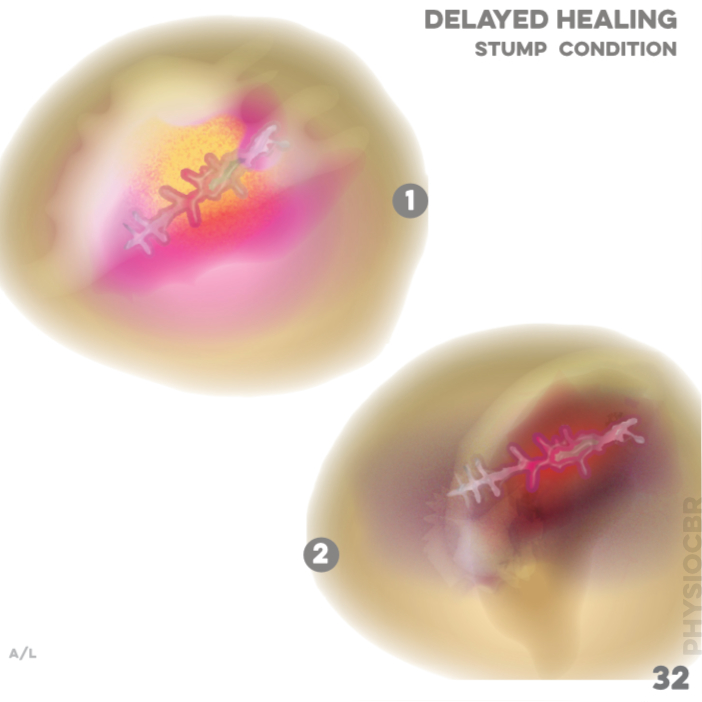
Stump condition. 1: heat, pain, redness, swelling; 2: hot, likely infected; healing wound but with signs of infection and painful
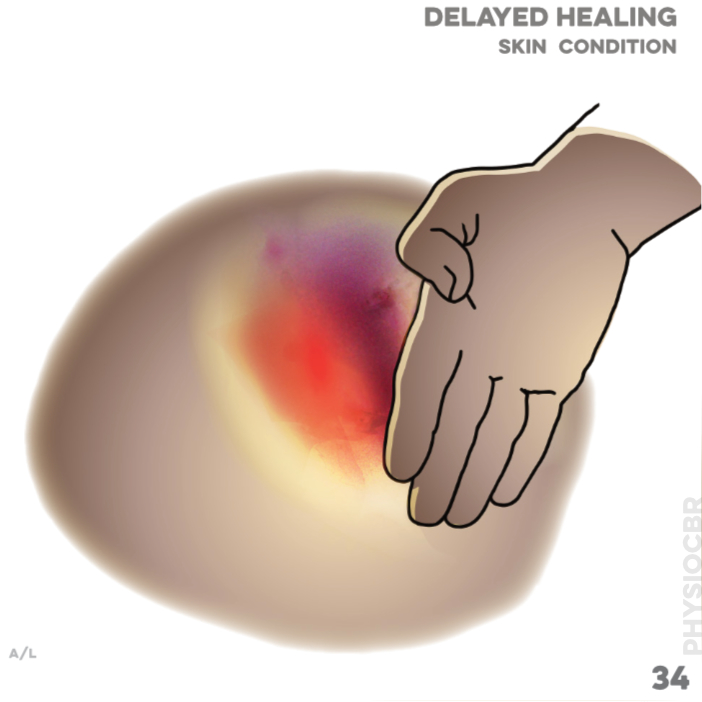
Use back of hand to measure heat, which may show signs of infection or swelling
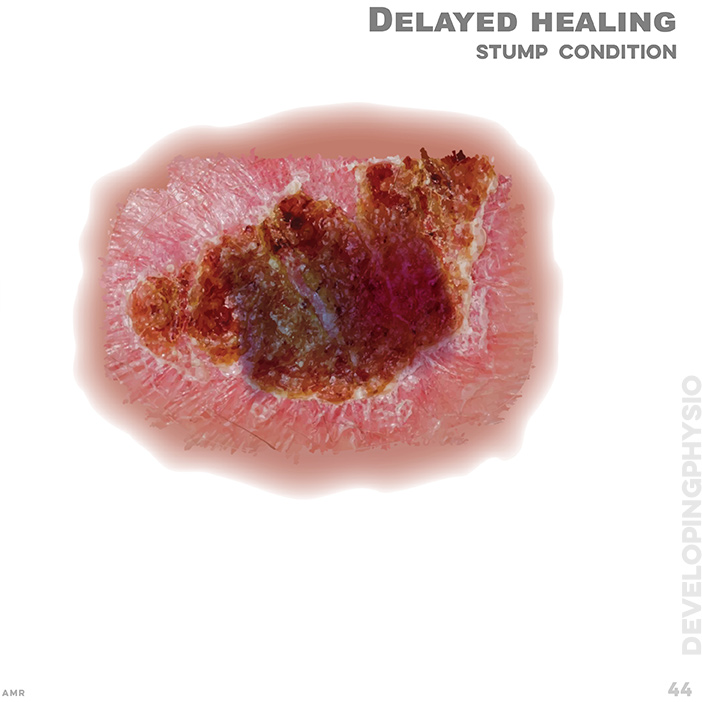
Skin condition: scar tissue

Oedema: a swollen foot is the body's response to trauma, pitting oedema is due to poor circulation

Oedema: gently press pad of thumb into the affected area, if it leaves a dent, pitting oedema is present

Multiple injuries: burns, haemorrhage, spinal fracture
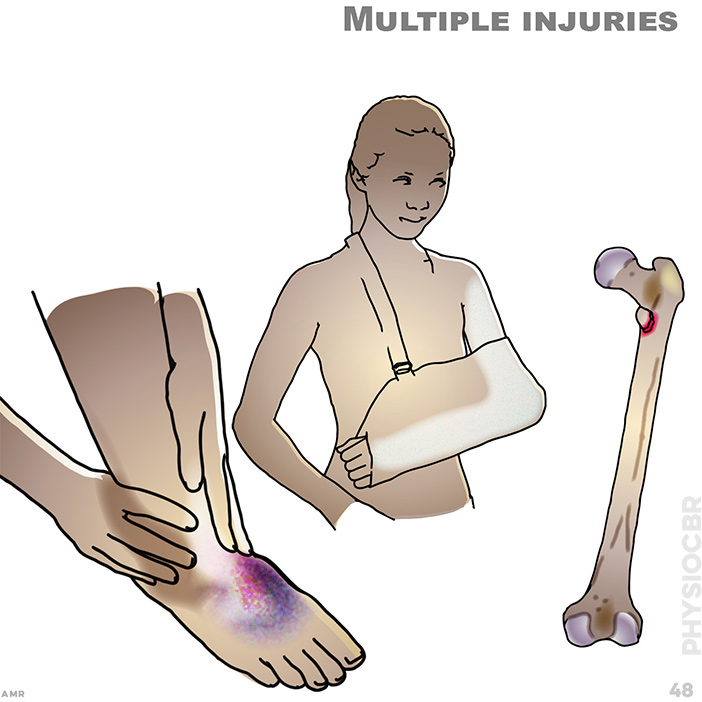
Multiple injuries: fractures, soft tissue damage to the body